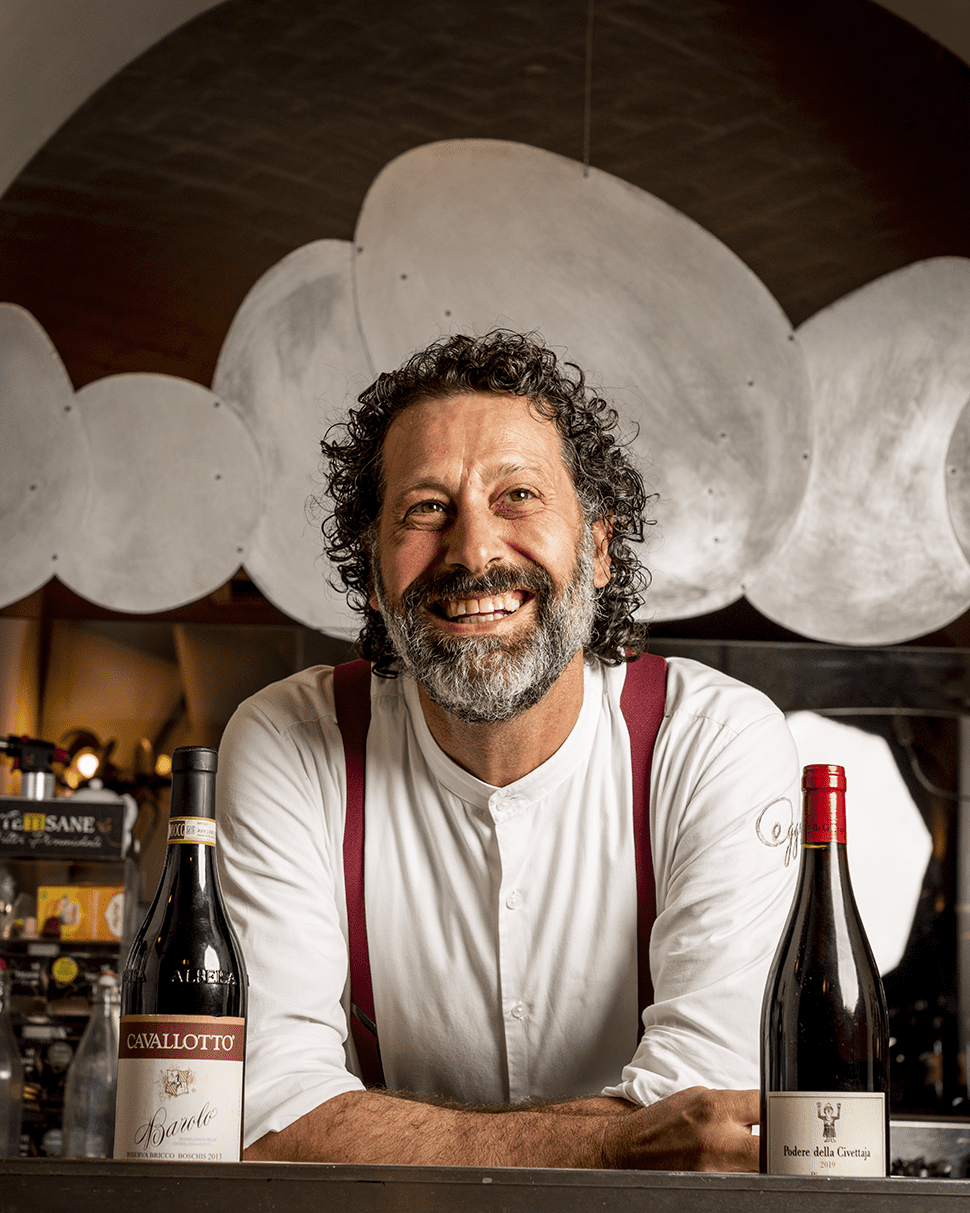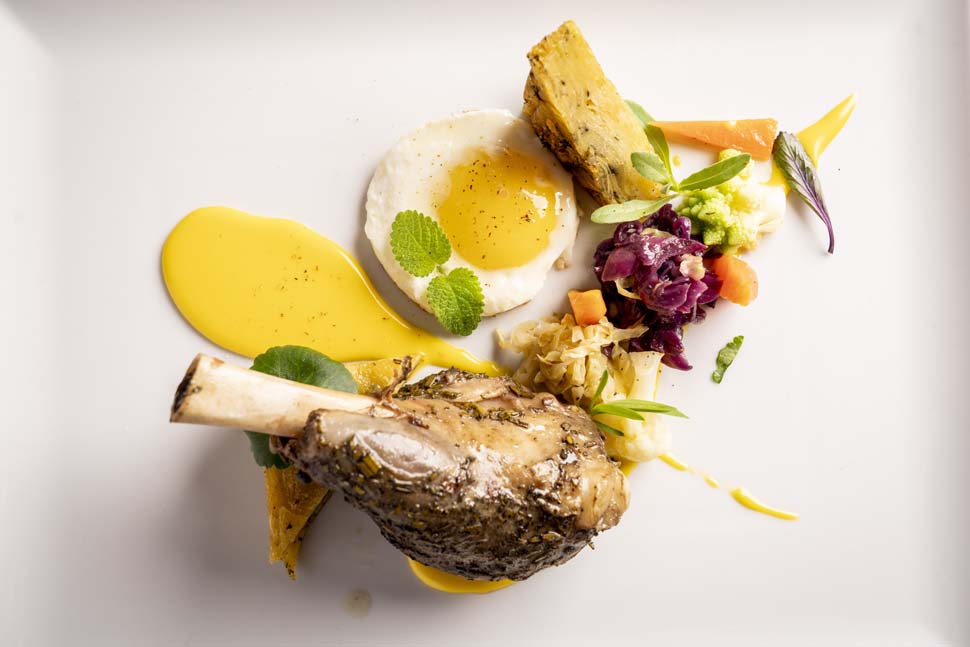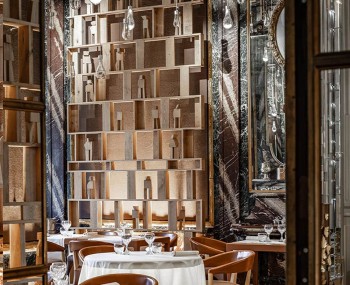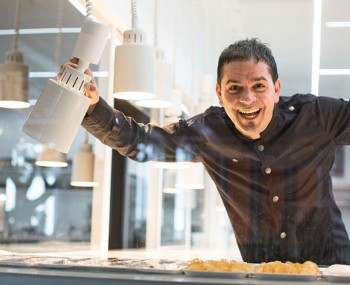In Trastevere, there is a place for egg lovers where the critical ingredient of carbonara is found in all the dishes (except one). Look no further for the surprises the Eggs menu, signed by chef Barbara Agosti, holds.
Eggs
"Eggs are the DNA of cooking; they have almost infinite uses and are an amazing technical ingredient." These are the thoughts of the chef at Eggs, the Trastevere restaurant for Roman (and non-Roman) egg lovers.
Eggs is a sign of innovation. The restaurant opened in 2017 in one of the most picturesque alleys of the capital. They occupied the former space of the Piano Strada restaurant with eighteen covers, but glory came at lightning speed. In their second year, finding a larger place to accommodate more egg lovers became a pressing need. Cacio e ova (cheese and egg) “meatballs”
Cacio e ova (cheese and egg) “meatballs”
The Restaurant
For the past five years, the restaurant has been taking a new shape in the same neighborhood where Eggs was born, but a few hundred meters from the original location, precisely on Natale del Grande Street. The new location boasts sixty seats inside and a comfortable outdoor area, designed in a street that acts as a watershed between the historic Piazza S. Cosimato, where children still have the privilege of playing ball in the square as they once did, and the hub of the Roman open-air nightlife.
The comfortably curated ambience can make customers eager to savor eggs; they feel at ease without lapsing into excessive formality. In the evening, the place acquires a romantic something-or-other aura conferred by the warm and pleasant lighting. Various cartoons of famous people, both current and from bygone but never forgotten eras, keep those who eat alone company and ignite the curiosity and memories of those with company instead. Cristiano, the Sommelier at Eggs
Cristiano, the Sommelier at Eggs
The chef
The idea behind Eggs is thanks to Chef Barbara Agosti. Born and raised in Novi Ligure, a town on the border between Piedmont and Liguria and for apparent reasons influenced by both food and wine traditions, she has had a love for eggs for a long time. But to make her plan a reality, she had to wait until 2012. That was the breakthrough year: she moved to Rome and opened Zum, a pastry shop focused on making tiramisu, a dessert hailed by Romans of every generation. But let's take a step back. Barbara Agosti's journey began much earlier, in her hometown, where she started her restaurant chapter with her first establishment, Brenta Rossa. Then she had a stint of consultancies across Italy and overseas in the United States.
"I've always had a passion for cooking, passed on to me by my aunts, who prepared both traditional folk dishes and dishes that tended more toward the gourmet world. I am particularly devoted to Ligurian recipes, but Piedmont is also present in my culinary identity, so I use various raw materials from the Savoy region, including meats." Lamb shank with hollandaise sauce, fried egg, and seasonal vegetables.
Lamb shank with hollandaise sauce, fried egg, and seasonal vegetables.
Barbara Agosti also recounts that her professional training comes primarily from field experience and theory to which she dedicated herself. "I am self-taught; in 2005, I interned with Chef Filippo Lamantia. Then, I dedicated myself to several courses between Lucca and Milan but more on specific topics that interested me, such as baking or using the siphon." Tartare of fassona and black truffle zabaglione
Tartare of fassona and black truffle zabaglione
After a brief but crucial return to past chapters, we delve back to the current page, arriving as far as when the chef bets on her beloved eggs, which in retrospect can be said to have been precisely those of the golden hens, dear to folk wisdom. Then she opens Eggs, which she co-owns with other partners. Guinea fowl in the woods
Guinea fowl in the woods
The kitchen and the dishes
Barbara holds the kitchen reins and has conceived a fine-tuned menu with her brigade in which eggs are ubiquitous. You find them in every dish, except for Non c'è (literally translates to there isn’t), and the fowl providing these eggs range from hen, ostrich, and quail to the coast, with sea eggs also making appearances.
 Scottish Salmon sashimi marinated in citrus with puntarelle (cicoria asparago), white martini gel and herring roe
Scottish Salmon sashimi marinated in citrus with puntarelle (cicoria asparago), white martini gel and herring roe
"Curiosity in the kitchen must always be active; I am not of the idea that the more you do something, the more you become a master of the recipe. My menu is constantly in flux; one has to have attention and care as if approaching the dish for the first time." The meticulous choice of seasonal products and suppliers are indispensable cornerstones of Eggs. "It is impossible to rely on a single supplier because we consume about 2,000 eggs a week; we currently use organic egg producers such as Liberovo, Pulicaro and Galline del Bosco. For vegetables, we adopt the same modus operandi. Of course, there is no shortage of suppliers from the Roman and Lazio area, including low-salt pecorino from Cibaria."
But what do you eat at this Roman eatery where the leitmotif is eggs of all kinds? Obviously, unfailing is the carbonara, the iconic Roman pasta dish. At Eggs, it has its own dedicated space on the menu with 12 versions that juggle between the hyper-traditional Classica to those catalogues by color.
There is the Bianca made with potato spaghetti, guanciale (cured pork cheek), pecorino cream, and egg cooked at 64 °C, which takes its place in the center of the plate and should be mixed in with the rest of the ingredients on the plate by those seeking to enjoy it. Then there is the Viola with caramelized onion, the Nera with added truffle, and many other nuances of a first course that, in its various forms, convinces the palate of even the most hardened Roman native.
Among the appetizers, you cannot fail to taste the Strapazzino, a magnum-style fried “ice-cream” bar of spaghetti carbonara. It’s a dish already known to the Italian TV audience because the Chef presented this carbonara da passeggio (“walking carbonara” that plays on the idea of eating this pasta while you take a walk) during an episode of Masterchef Italia in 2019. Crispy and mouthwatering, this non-ice cream stick is prepared in three variants: Classic, Truffle and 'Nduja (a typical soft, almost spreadable spicy sausage from Calabria). But fear not: you will find the written indication of the flavors on the stick so that you won’t take a bad bite! Carbonara "da passeggio"
Carbonara "da passeggio"
Perhaps the opening course most representative of the restaurant's concept is the Gioco dell'Ova (the Egg Game): six stuffed eggshells served in the carton where this product is bought. The dish is a mini-tasting course featuring six samples that are all tantalizing and original. For mortadella lovers, a tip: don't miss Mortazza mia (The title is a play on two words in Roman dialect: mortaccia mia, which means my death and mortazza, which means mortadella), a ravioli filled with the Bologna sausage served with parmesan cream and pistachios. It’s rich pasta in which the mortadella flavor comes through powerfully. Mortazza mia
Mortazza mia
There is also an 8-course tasting menu, which is the perfect solution for those caught in indecision and who want to try so many dishes that they cannot choose just two or three.
It concludes with the desserts, including Ovosodo (hard-boiled egg), a thin white chocolate casket that holds at its heart natural Greek yogurt and tangerine gel. The dessert rests on a lightly salted crumble of dark chocolate cookies. Obviously, the course at the end of the meal is egg-shaped to close the circle of tastings as consistently as it began. Ovosodo
Ovosodo
Eggs is an award-winning restaurant, lauded by both domestic and foreign guides, and has won a space in the hearts of locals and tourists alike by introducing in the center of the city an idea of themed cuisine previously missing in the Capital. Peanut mousse, apricot, and salted caramel log
Peanut mousse, apricot, and salted caramel log
Sito web











